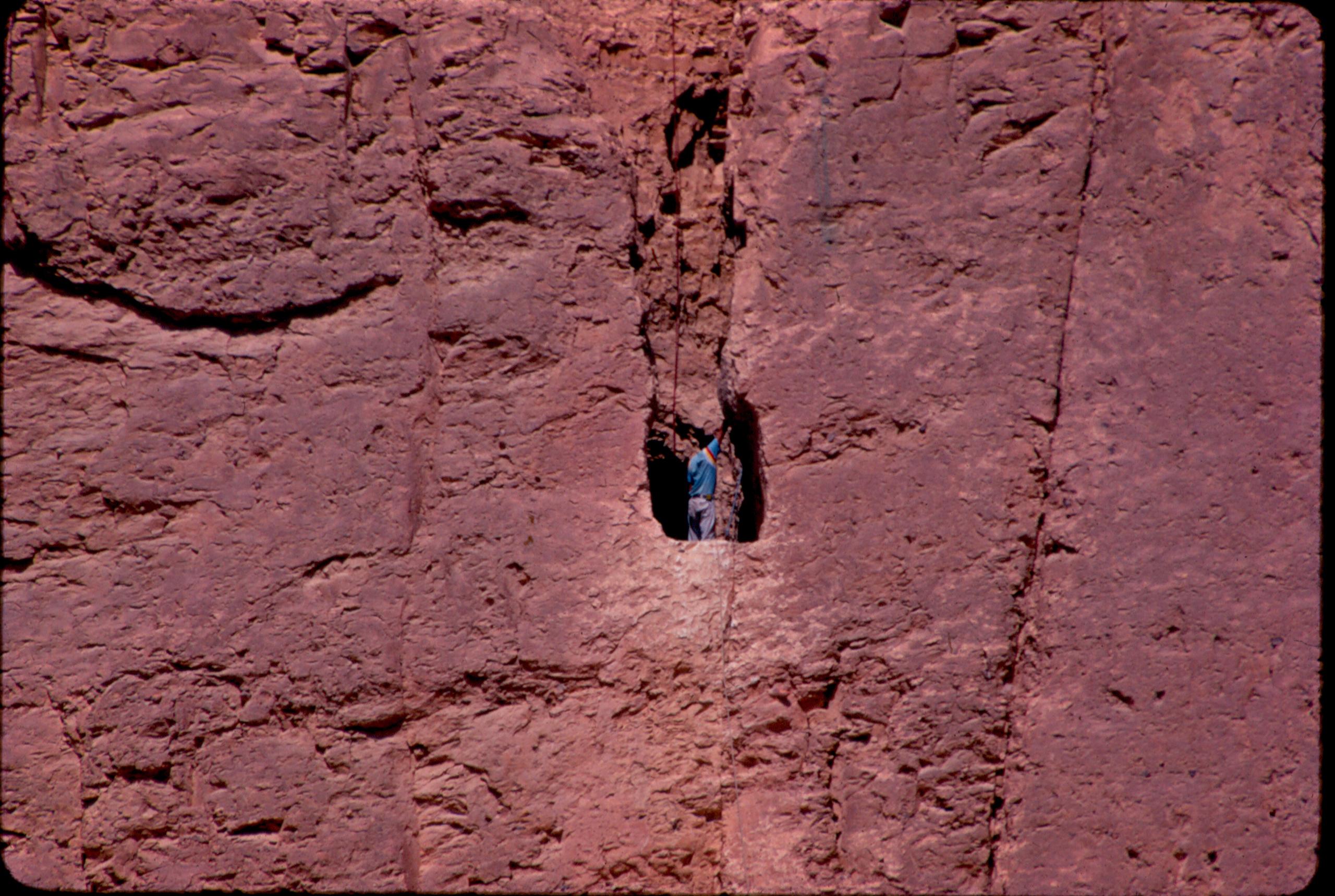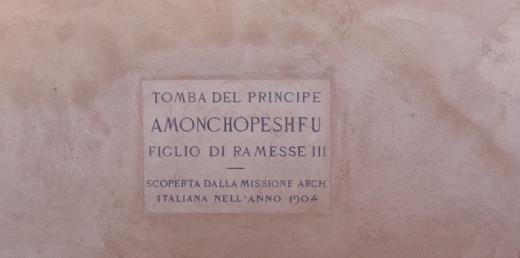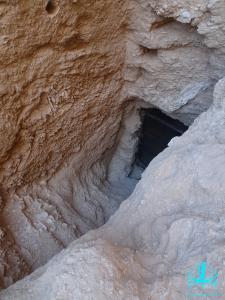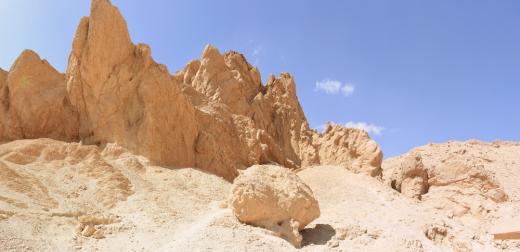Wadi 1-b
Anonymous
Entryway A
See entire tombA large, unprotected shaft leads down to the burial chamber.
Burial chamber B
See entire tombAn unusually elongated, rectangular burial chamber that is undecorated. The walls and ceiling have eroded and the exact dimensions of the chamber is obscured by debris.
Chamber plan:
RectangularRelationship to main tomb axis:
ParallelChamber layout:
Flat floor, no pillarsFloor:
One levelCeiling:
Flat
About
About
Wadi 1-b is located in Wadi 1, so named after the ‘1’ on Howard Carter’s survey map of the Western Wadis. It consists of a shaft entrance (A) leading down to an elongated, undecorated burial chamber (B). The owner of the tomb is unknown.
Although noted by Carter during his survey of the Western Wadis in 1916-1917, Wadi 1-b was first mapped and studied by Elizabeth Thomas in 1959-1960. Thomas records that the post-burial stone chips of the tomb lay intact nearby and that fragments of blue painted ware (pottery) typical of the reigns of Amenhetep III to Akhenaten lay scattered around the shaft for several meters. Fragments of red, ridged coptic ware were also apparent. The latter was unsurprising as several coptic dwelling remains were noted earlier in the wadi by both Howard Carter and Herbet Winlock. Wadi 1-b was last surveyed in 1982 by the Theban Mapping Project and has been dated to the 18th Dynasty.
Site History
The tomb was constructed in the 18th Dynasty and emptied at a later, unknown period. Coptic materials have been noted near the tomb entrance.
Dating
This site was used during the following period(s):
Exploration
Conservation
Site Condition
Wadi 1-b is cut into conglomerate and the shaft entrance has a built dry wall on its northern side. The shaft entrance has eroded, as with other shaft tombs in the western wadis, and this may be due to water inflitration. The ceiling of the burial chamber has also suffered erosion.
Articles
Tomb Numbering Systems in the Valley of the Queens and the Western Wadis
Latest Discovery in Wadi C (2022)
Geography and Geology of the Valley of the Queens and Western Wadis
Bibliography
Carter, Howard. A Tomb prepared from Queen Hatshepsut and other Recent Discoveries at Thebes. The Journal of Egyptian Archaeology, 4 no. 2/3 (1917): 107-118.
Thomas, Elizabeth. The Royal Necropoleis of Thebes. Princeton: privately printed, 1966.




